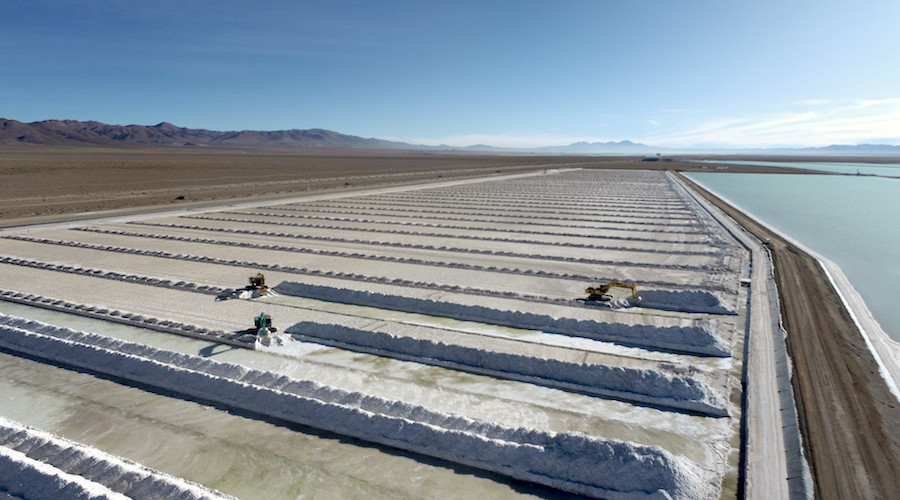
The Lithium Triangle comprising Argentina, Bolivia and Chile holds two thirds of the world’s lithium reserves. Yet the South American region sitting 12,500 feet above sea level makes a much smaller fraction of the world’s new ‘white gold’ used to make highly demanded electric vehicles (EV)s, smartphones and laptops.
The three Andean nations together make roughly 45,000 tons of the key metal versus roughly 60,000 tons for Australia, the world’s biggest producer. Meanwhile, its mining reserves vastly outshine Australia’s, at 52 million tons compared to 8 million tons respectively.
Because of these huge, largely untapped resources, the nation trio is expected to lead a new wave of investment as the global lithium rush shifts into its next development phase. Consequently, the three governments are rushing to partner with global mining giants to extract the silver-white metal. This is happening as analysts predict EV battery demand will surge over 22% annually by 2030.
Emboldened by Chile’s recent drive to nationalize its industry, Argentina is scrambling to draw new investors and could lure $10 billion to $20 billion in the next five years as miners such as Bill Gates’-backed Lilac Solutions, Livent and Toyota Tsusho scramble to install dozens of mines in its vast salt flats.
“There are so many companies looking at Argentina,” said industry consultant Oscar Vargas. “There are at least 20 projects planned to triple production this year. “All of our clients are interested including Chinese, Korean, Japanese and Australian firms.”
Argentina drew $6 billion in 2022 to make lithium from its vast Salta and Jujuy provinces. But a big political change could drive even more funding. This is because far-right candidate Javier Milei is seen leading polls to become the next president in October. Milei, an admirer of former US president Donald Trump, wants to dollarize the economy and has hinted to a hands-off approach to lithium.
“By late 2024, Argentina could make 200,000 tons of lithium, surpassing Chile,” Vargas claimed.
But Texas A&M University professor Diego Von Vacano disagreed. “I think it’s a bit exaggerated for Argentina [referring to the investment and production targets],” he said. “Maybe they can get half of that?” Von Vacano expects Chile will continue to attract funds, albeit at a slower pace than Argentina.
“SQM is still a powerhouse and Albemarle (the leading Australian supplier) is still planning to bring big investments,” he said. “EnergyX (of Texas) also plans to ramp up production.”
Chile has vowed some ‘flexibility’ to work with private investors including allowing them to majority own non-strategic projects. In Bolivia, meanwhile, at least $10 billion is expected to arrive, mainly from Chinese firms such as Contemporary Amperex Technology, which is rushing to help the landlocked nation churn out 300,000 tons of lithium carbonate between 2025 to 2030.
The massive investment drive could of course mint new millionaires as investors, executives and other entrepreneurs rush to take a piece of the action. Traders could back a slew of publicly traded firms such as Australia’s Albemarle and Liontown Resources but also other companies such as Lithium Americas or Sigma Lithium. They could also participate in EnergyX’s IPO which is slated for the next 12 months.
“The easiest way is to invest in these companies which have a lot of upside but there will also be specialized funds and ETFs,” said industry consultant Andy Leyland. One such vehicle is Sprott Lithium Miners’ ETF, which launched in February and counts Australian miners Pilbara, Albemarle and IGO as its top three holdings. There are also other opportunities.
“In Argentina, there are lots of different land parcels being developed and explored so depending on their stage, you can invest in them,” Leyland added. Underscoring investors’ enthusiasm for the region, he added: “I recently attended a conference in Argentina with 1,300 delegates. There were service providers, logistic companies, drilling firms, etc. There was a really good buzz about it.”
But investing in the triangle won’t be for the faint of heart. Investors will need to navigate sketchy regulations and corrupt institutions making it hard to calculate future returns. Furthermore, the risk for social and political upheaval is acute. Already, indigenous communities in Argentina’s Jujuy are up in arms about drying land and water pollution while Bolivian communities are demanding a fair share of the country’s future riches.
The tri-nation is also considering integrating their supply chains to create a leading battery exporter to the US. But here too there are looming challenges.
“These countries have very different legislations and politics so integrating them is going to be very hard,” according to Gonzalo Mondaca of Bolivian think tank Cedib. “Bolivia is very restrictive while Chile has PPPs,” he said. “Argentina offers more advantages but because the industry is managed by region, things have gotten out of hand in Jujuy where too many projects have been handed without regard for water quality.”
(The views and opinions expressed herein are the views and opinions of the author, Ivan Castano, a contributor to Reuters.)
Comments